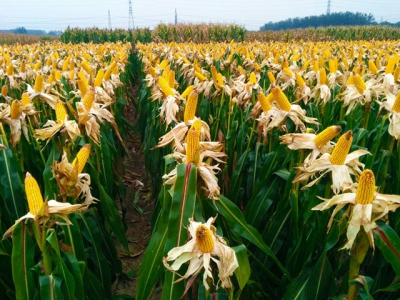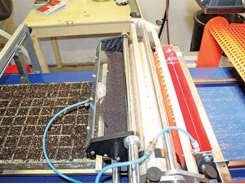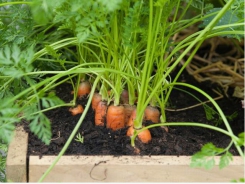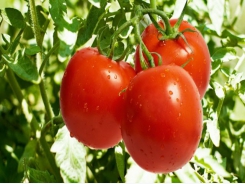The farming philosophy of a top maize farmer

American farmer David Hula holds the current world record for maize grain yield. On a recent lecture tour of South Africa’s principal grain farming areas, he shared some of the methods he uses to maximise his yield.
It would be natural to expect David Hula, the world record holder for maize grain yield, to have all the answers to all the questions from farmers everywhere on how they too could achieve a maize yield approaching his 25t/ha. It is therefore rather disconcerting to hear him begin his presentation with the words: “I by no means know everything there is about growing corn [maize].”
Different conditions
David’s maize production conditions are likely to be different to those of other farmers. South Africa, for example, lies in a different hemisphere almost halfway around the world from the USA. Therefore aspects such as soil, climate and scales of production might prevent SA farmers from keeping up with world-leaders such as David. But that is not to say that our farmers cannot follow his winning philosophy with the aim of achieving the maximum yield potential for their own maize crops.
“One of the most important things that I do is to be a sponge for all the information I read or hear on maize production,” he says. “I make sure to surround myself with people who have a wide knowledge of producing maize. If anything goes wrong, I have people to contact to help improve what I’m doing.” He adds that he always sets himself goals.
Collaboration on Genetics
David makes a point of leasing out sections of his cropping lands to seed companies to use for their advanced line trials. This allows the Hulas – his father Stanley and brothers, John and Jeff – to experience the latest maize genetics first-hand. David also gets seed companies to evaluate some of the genetics that he sources from elsewhere. He explains that it is easier to evaluate new new maize genetics on a small scale before deciding which of these he will grow on a large, commercial scale.
The same principle applies to input companies that want to research their products. Both the Hulas and the companies benefit from this collaboration. “I always trial new seed varieties more than once so that I can get an average performance from them that I can then base my choices on,” says David.
The environment
He adds that farmers everywhere should consider themselves the stewards of the land. They should always be “environmentally mindful”, aiming to keep erosion, fertiliser and chemical runoff to a bare minimum. This will help to ensure not only the sustainability of land for food production, but also of the natural environment for the benefit of future generations.
Hands-on
David is a keen ‘scout’ and walks through at least one of his lands every day. “This helps me fully appreciate what’s happening in the crop, and allows me to quickly identify and solve any problems I find,” he explains. He places major emphasis on using only good quality seed to grow his maize and other crops. “If you’re going to have a good crop, then you have to start off with a good crop. So make sure that you have good quality seed when you start planting,” he stresses.
Key points
David has come up with what he describes as “five key points on maize farming” that he likes to share with people interested in his farming achievements. Together with his daughter, Amber, they named it the Farmer’s Hand of Success. The first point, represented by the thumb, is that a farmer must have a positive attitude and an open mind to what he is doing. He must, in short, be willing to try something different.
“If you plant the same seed population per hectare and put down the same fertiliser formulation as you’ve always done, but decide to change your maize hybrid, you’re only making a minor change. You’re still going to get the same result that you’ve always achieved,” David says. “Don’t make small changes and expect big results.”
According to David, Renwood Farms does not have particularly productive soils. He describes them as being “plain ol’ soils” that he, over the years, has learned to manage optimally. He firmly believes that his farm’s soils are poorer than many of South Africa’s soils currently under crops. Yet he is still able to achieve phenomenal yields.
The index finger on the Farmer’s Hand of Success represents the ability to manage soils better. David is pleased to note that many SA crop farmers follow minimum tillage or no-till practices. Renwood Farms started using this approach many years ago and is now 100% no-till. The Hulas believe the term “never-till” is more apt. They implement it for its sustainability, soil health and moisture conservation benefits.
“You can manage your soil and its fertility even though your farms are far away from mine,” David encourages. “Each crop farmer must know how much fertiliser his farm’s soils need in order to achieve a particular yield. If you want a bigger yield, then at some point you’re going to have to apply more fertiliser. You’re also going to have to better manage your pests and diseases. We don’t tolerate them in our cropping business.”
The use of the most effective farm equipment, represented by the middle finger, is the third key. David emphasises that a great deal of useful crop production technology is available and farmers can select to suit their specific goals. Examples are implements for improved planting, and hi-tech systems to collect detailed yield data while a crop is being harvested by combine.
“Make sure to collect as much information as you can, analyse it, and then adjust your equipment as necessary,” he stresses.
David refers to the ring finger as the “relationship finger” and uses it to point out that “picking the right maize variety is like picking your spouse”.
“It’s emotionally driven. If done right, it’s rewarding. But if done wrong, it can be very costly.”
Finally, the baby finger is what David refers to as the “plan finger” as it represents how farmers should be task- or goal-orientated. If a farmer fails to achieve a goal the first time, he should keep trying until the task is satisfactorily completed. “Develop a plan and execute it,” David urges.
“We all have major challenges at one time or another, so you may have to adjust yours accordingly. See opportunities in the challenges. Then evaluate the outcome, modify the plan and start again, if necessary. And develop short-, medium- and long-term plans.” He encourages farmers to have baselines and benchmarks to compare results. “Don’t let your farming business stagnate. Always strive for better than what you’re currently achieving.”
Precision farming
The Hulas are keen on precision farming as they believe in maximising each spot in a land to its full potential. They break it into
zones of similar fertility based on the results of detailed and regular soil sampling. David places great emphasis on analysing his soils’ cation exchange capacity (CEC) in helping him to manage soil fertility optimally. He concludes with a call to farmers not to compromise.
“Be sure to never cut corners or costs. This will end up cutting yield too,” he says.
Related news
Tools

Phối trộn thức ăn chăn nuôi

Pha dung dịch thủy canh

Định mức cho tôm ăn

Phối trộn phân bón NPK

Xác định tỷ lệ tôm sống

Chuyển đổi đơn vị phân bón

Xác định công suất sục khí

Chuyển đổi đơn vị tôm

Tính diện tích nhà kính

Tính thể tích ao




 Plant Diseases – Understanding the Problem
Plant Diseases – Understanding the Problem  Sugarcane, with tomatoes on the side
Sugarcane, with tomatoes on the side